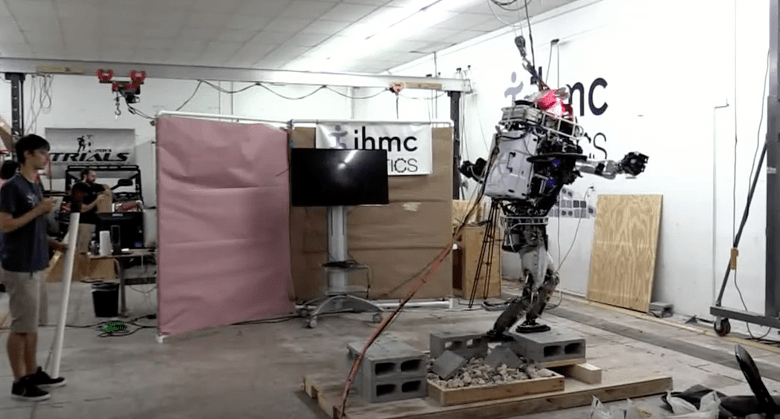Imagine a robot that mirrors the cautious approach of a human navigating through a field of debris. The latest advancements by Boston Dynamics and the Institute for Human and Machine Cognition (IHMC) demonstrate just that with their bipedal humanoid robot, Atlas. Recently, they’ve been aiming for unprecedented levels of sophistication as Atlas learned to traverse uneven and challenging terrains, highlighting not just technological innovation but the potential for humanoid robots to assist in complex real-world situations.
The Art of Gingerly Walking
There’s an almost poetic quality to the way Atlas approaches its environment. When faced with a series of uneven surfaces—like mishandled bricks turned on their sides—the 330-pound humanoid robot demonstrates an intriguing blend of caution and intelligence. It doesn’t simply stomp through the rubble. Instead, Atlas carefully assesses each surface, testing its footing before applying its weight. This deliberate strategy reveals a level of control that emulates human behavior, making the experience both fascinating and oddly comforting.
Innovative Technology Behind the Movement
The methodology developed by the researchers at IHMC Robotics Lab is groundbreaking. They’ve engineered a system that allows Atlas to operate without the need for a pre-programmed understanding of obstacles. Here’s how it works:
- Each step begins with an evaluation of the surface underfoot.
- Atlas shifts its weight with precision, leveraging its upper body for angular momentum.
- This cautious technique allows it to maintain balance while engaging with an unfamiliar environment.
The beauty of this system lies in its flexibility. The robot can manage varying sizes and geometries of surfaces, which makes it not only capable but also adaptive—a key trait for any machine designed to work alongside humans in unpredictable settings.
Why Is This Development Important?
The implications of a humanoid robot like Atlas navigating challenging terrain stretch far beyond mere spectacle. The IHMC envisions a future where such robots can assist in disaster response scenarios, performing tasks in environments that are unsafe for humans. This includes areas plagued by earthquakes, landslides, or architectural debris—scenarios where time and precision can save lives.
Atlas is part of a broader initiative to elevate the capabilities of bipedal walking robots. According to IHMC, “While great strides have recently been made in robotics, robots still cannot get to the same places that people can.” This insight provides context for the ongoing improvements being sought—the aim is to enable humanoids to handle rough terrains without extensive onboard sensors, enhancing their functionality exponentially.
Challenges and Future Directions
While Atlas’s recent achievements are remarkable, the journey towards perfecting bipedal locomotion is far from over. The research team is continuously tackling increasingly complex walking challenges, such as incorporating external disturbances or navigating steep inclines. Each of these obstacles brings its own set of requirements, ensuring that the evolution of robotics is dynamic and ongoing.
Conclusion: A Glimpse Into Tomorrow
As we stand on the brink of transformative change in robotics, the progression of Atlas embodies the potential for humanoid robots to shape the future significantly. From disaster rescue operations to everyday tasks, the capabilities being developed today will have lasting impacts on human-robot collaboration. Not only are we witnessing impressive technological advancements, but we are also beginning to understand how these machines can integrate into our lives safely and effectively.
At fxis.ai, we believe that such advancements are crucial for the future of AI, as they enable more comprehensive and effective solutions. Our team is continually exploring new methodologies to push the envelope in artificial intelligence, ensuring that our clients benefit from the latest technological innovations. For more insights, updates, or to collaborate on AI development projects, stay connected with fxis.ai.

